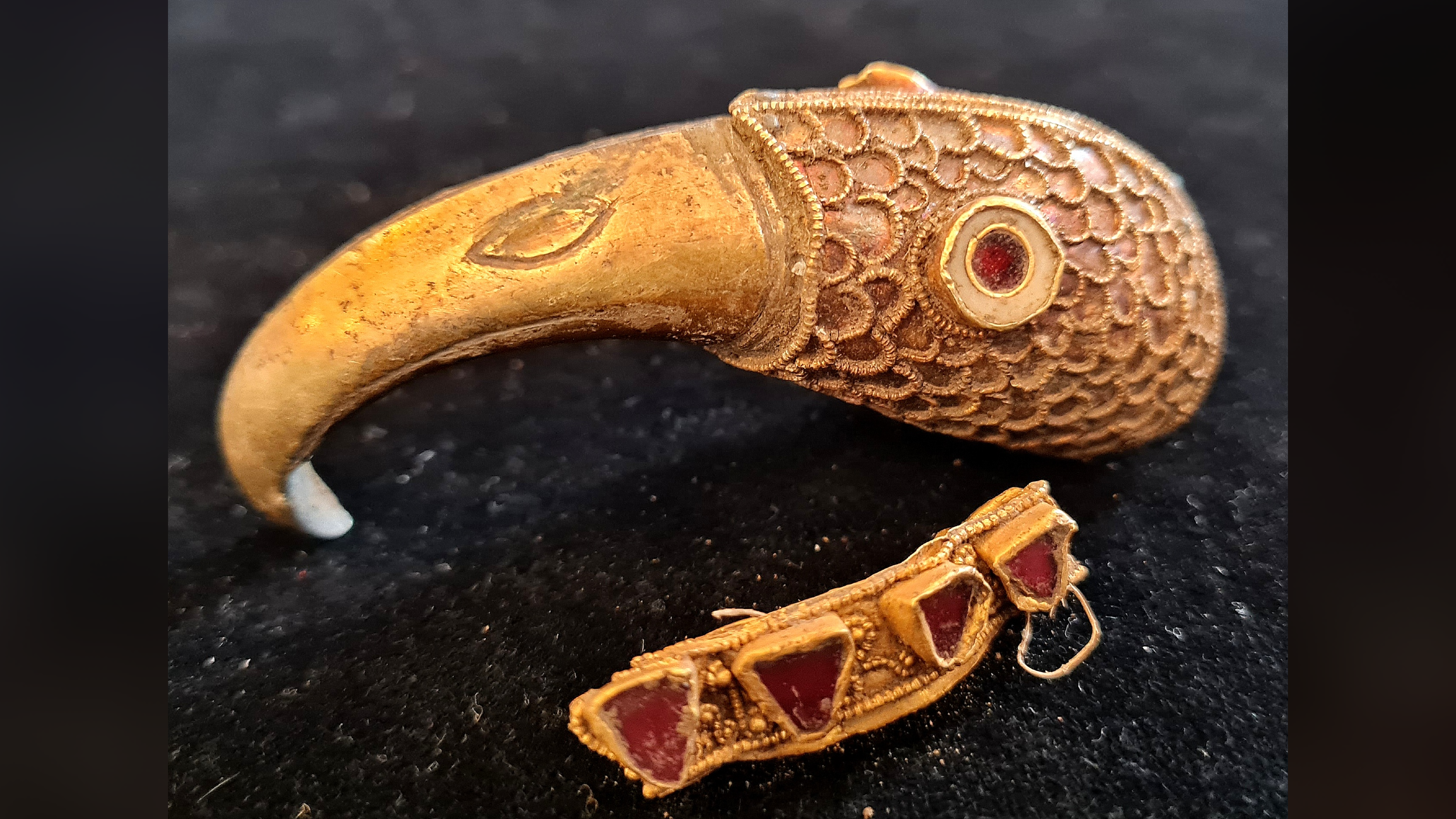While searching a field in southwest England, metal detectorists stumbled on the “find of a lifetime”: two gold-and-garnet objects dating to around 1,400 years ago.
Paul Gould, a new detectorist with the Ninth Region Metal Detecting Group, hit on a flat metal object toward the end of a long day of detecting on Jan. 8. He thought the gold band, inlaid with triangular garnets and studded with tiny beads of gold, was an Anglo-Saxon ring.
But as fellow detectorist Chris Phillips searched nearby, he hit on something even more extraordinary: a decorated raven’s head.
“It’s unbelievable — I’m a bit emotional,” Phillips said in a video of the discovery posted to his YouTube channel.
The raven’s head, also believed to be Anglo-Saxon and date to the seventh century, included a stunning garnet eye and tiny gold spheres outlining the garnet-flecked “feathers.” Phillips estimated it weighed about 2 ounces (57 grams).
Related: ‘Exceptional’ hoard of 800 Iron Age artifacts found mysteriously burned and buried in UK field
Ravens were often seen as harbingers of death and darkness in early European historical and mythological writings, and Germanic and Viking Age people associated two ravens with Odin, the Norse god of war and death. But it is unclear what the gold-and-garnet raven’s head was meant to represent.
After discovering the two gold objects, the group contacted the landowner and the local finds liaison officer, who is part of the U.K.’s Portable Antiquities Scheme. The program encourages members of the public to report the discovery of archaeological objects to enhance the understanding of England’s history.
“The finds will go through the treasure process now, which will take a while,” Phillips told Live Science in an email. According to the U.K.’s Treasure Act, artifacts crafted from precious metals that are at least 300 years old can qualify as treasure.
As a part of the “treasure process,” the objects are being cleaned by experts at the British Museum, where Phillips and Gould went to visit their finds earlier this year, documenting the journey in another video.
Initial cleaning revealed the right side of the raven’s head, which is missing a garnet eye, as well as incised nostrils on its beak. Phillips noted that, with the dirt removed from the inside of the raven’s head, small pins could be seen. Those may have attached the decorative head to a drinking horn, he thinks, similar to an example found in the Anglo-Saxon ship burial at Sutton Hoo.
The ring that Gould discovered was also cleaned by experts, but it is still unclear if it was a piece of jewelry or a decoration that became detached from its original context.
Given the discovery of two remarkable pieces of gold, the spot where they were found is now being investigated as a potential archaeological site, Phillips said.
“We hope to be involved in any further investigation of the site, and we will continue to detect with all the correct procedures in place,” he said.

Watch On
